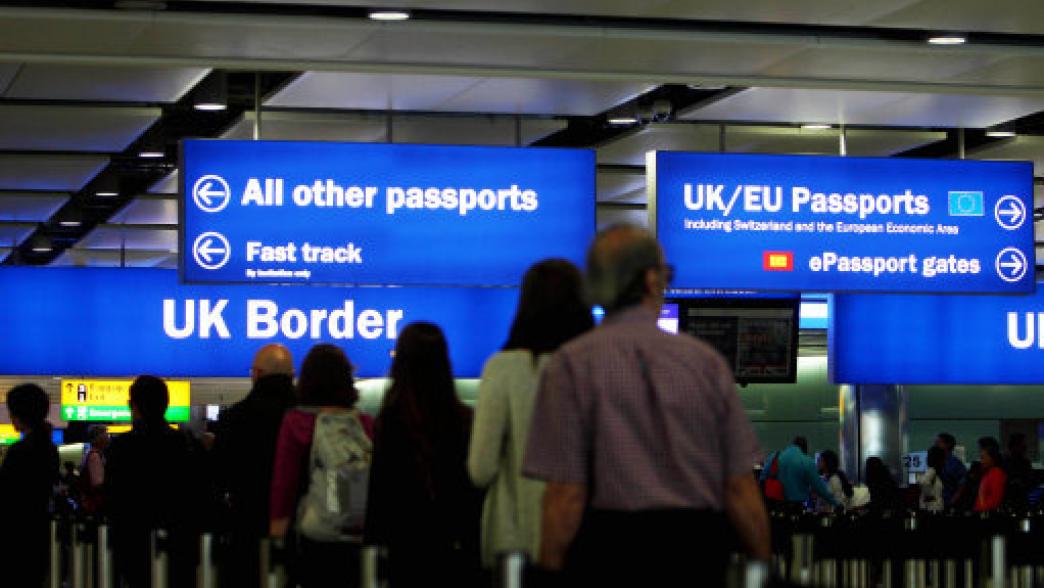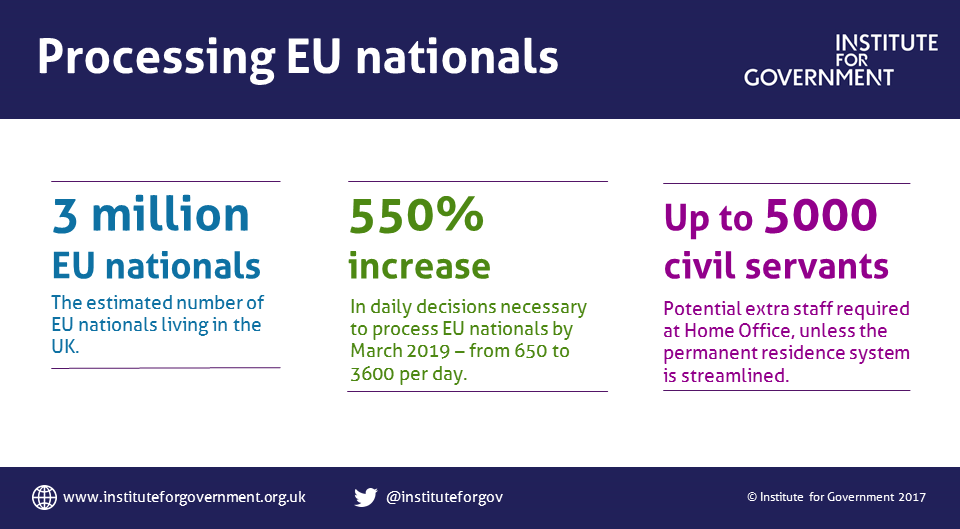
The Conservative Party promises to cut net migration. While Brexit gives government greater control of numbers, Joe Owen argues that any change is unlikely to happen much before the next election in 2022.
The Conservative manifesto recommits the party to cutting migration. While Brexit means the UK can ‘take back control of its borders’, those who see 29 March 2019 as the date it all changes are going to be disappointed. Our recent research shows that any change is unlikely to happen until well into the next Parliament.
Unrealistic targets
Any party that wants to reduce net migration to the ‘tens of thousands’ will need to overhaul the entire immigration system. The latest net migration figure was 273,000, with only half of these coming from the EU under free movement. The other half came from outside the EU, through a visa system designed and run entirely by the Home Office, with migrants meeting criteria such as salary requirements or qualifying for exemptions by working in key ‘shortage’ professions (currently includes nurses and paramedics).
Implementing an immigration system that is capable to deliver the 100,000 net migration target may be more realistic post-Brexit than it was in 2010, but it’s still a big challenge. Aside from the highly political nature of the decision and the possible impacts to the economy, the administrative task of making such a change happen is huge.
The last change to immigration rules took almost five years from design to delivery and brought together largely pre-existing features of the non-EU migration system. Ending free movement and redesigning the whole immigration system represents a different scale of challenge.
We have been promised legislation on post-Brexit immigration. There will need to be consultation with key industries on the details of a new system and engagement with those employers, landlords and public services whom government rely on to enforce its immigration rules. Any detailed design for post-Brexit immigration is unlikely to be agreed, let alone legislated for, by the end of this calendar year.
“Phased implementation”
Those who see this as the Brexit process being hindered by sluggish processes should recognise that implementation of a new system is not just a job for government. Farmers, law firms, the NHS, coffee shops, industries and employers of all shapes and sizes, will need to adapt. Whether it’s adjusting to a new labour market, or new processes for sponsoring workers, a huge number of organisations will be affected.
When government put Automatic Pension Enrolment in place, it gave businesses around five years to adapt. It was two years for the Apprenticeship Levy. Timelines for implementing a new immigration regime are not just about how quickly the Home Office can make the change, but also how long it will take for a small business without a dedicated HR or government affairs department to prepare for the change.
A new immigration system for EU nationals is only possible once the rights and status of those already living in the UK have been secured. What was originally billed as an obvious reciprocal arrangement, which could be put in place quickly before formal negotiations began, is starting to emerge as a series of complex questions around acquired rights and entitlements. But even once these questions are settled, there is a significant administrative challenge in providing the correct documentation to an estimated 3 million EU nationals. An agreement is one thing, but until individuals have the relevant paperwork they risk being unable to prove their entitlement to public services, jobs and housing.
The current process for documentation is not fit for purpose, as David Davis, Secretary of State for Exiting the EU, confirms. Despite a huge surge in activity at the Home Office, the process is functioning at a fraction of the volume required. Issuing the necessary documentation will require a 550% increase in decision rates, and based on 2014 data, it could require up to 5,000 additional civil servants. The manifesto doesn't address this issue.
While the political imperative for change in immigration is significant, so is the bureaucratic task of implementing such a change. Free movement will need to continue for some time post-Brexit.
If a new government is serious about reaching a 100,000 target, it should recognise the scale of change required to make it a reality.

This blog was originally published 9 May and updated after the Conservative manifesto launch.
- Supporting document
- Brexit_immigration_WEB.pdf (PDF, 339.15 KB)